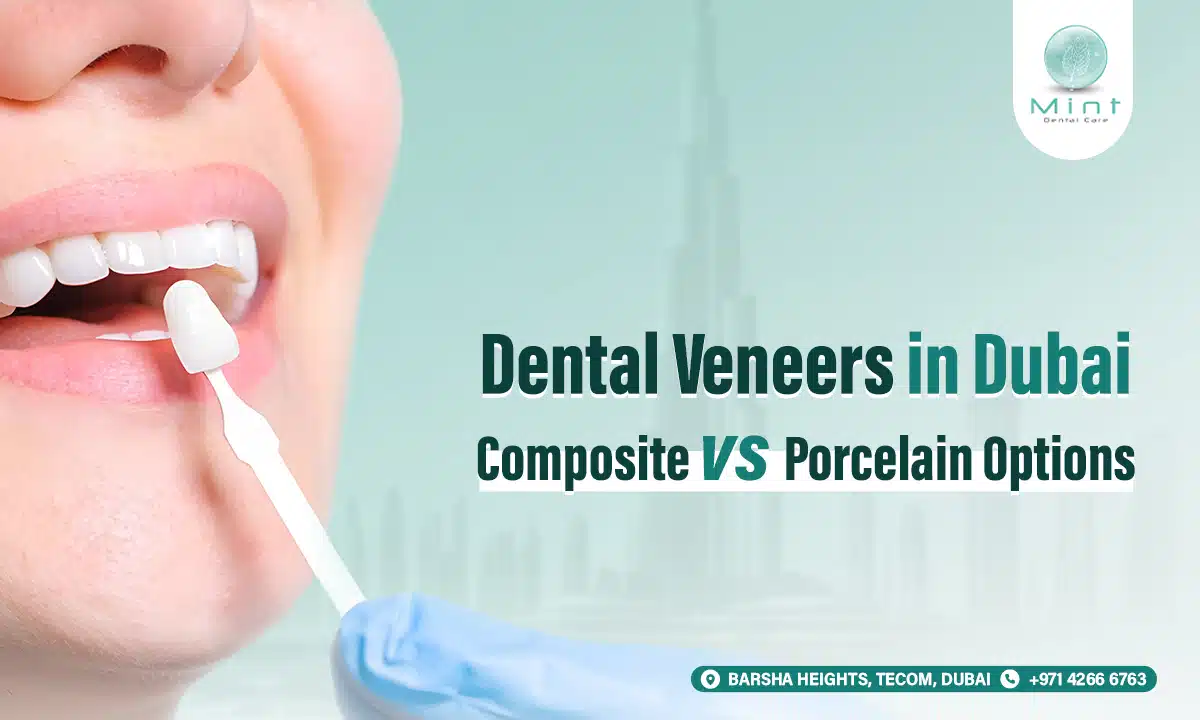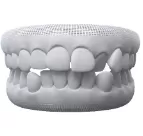Dental veneers are an excellent cosmetic solution for individuals looking to enhance their smile. Whether you’re seeking to correct discoloration, chips, or misalignment, veneers offer an effective way to restore the natural beauty of your teeth. In Dubai, two primary types of veneers dominate the cosmetic dentistry scene: composite and porcelain.
Both options come with their own sets of benefits, limitations, and costs. But how do you choose between the two? This article will delve into the differences between composite and porcelain veneers to help you make an informed decision for your dental needs.
What Are Dental Veneers?
Dental veneers are thin, tooth-colored shells that are bonded to the front of the teeth to improve their appearance. They can alter the shape, size, color, and overall aesthetic of your smile. Veneers are often used to cover imperfections such as gaps, stains, chips, or minor misalignments. In Dubai, clinics like Vilafortuny offer both composite and porcelain veneers, each serving different patient needs based on aesthetics, durability, and cost.
What Are Composite Veneers?
Composite veneers are made from a resin material that is applied directly to the teeth and sculpted by the dentist to create the desired appearance. This process is done in a single dental visit, making it a more convenient option for those with busy schedules.
What Are the Advantages of Composite Veneers?
- Less Invasive Procedure
Composite veneers require minimal preparation of the natural tooth, meaning less enamel removal compared to porcelain veneers. This makes the procedure less invasive and more reversible. - Cost-Effective
Composite veneers are generally more affordable than porcelain options. This makes them an attractive choice for individuals on a budget or those seeking a quick smile transformation without a significant financial investment. - Single Appointment Procedure
One of the biggest advantages of composite veneers is that they can be placed in a single visit, unlike porcelain veneers, which require multiple appointments for crafting and fitting.
What Are the Disadvantages of Composite Veneers?
- Less Durable
Composite veneers are less durable than porcelain veneers. They typically last between 5 to 7 years, and may be prone to staining and chipping over time. Regular maintenance and touch-ups may be necessary to maintain their appearance. - More Frequent Replacement
Due to their relative fragility, composite veneers may need to be replaced more frequently than porcelain veneers. This could add to the long-term costs despite their initial affordability. - Less Translucent
While composite veneers can look great, they may not have the same translucent quality as porcelain. This can affect the overall natural appearance of the teeth, especially when viewed in certain lighting.
What Are Porcelain Veneers?
Porcelain veneers are custom-made thin shells of ceramic that are bonded to the front of the teeth to improve their appearance. The process typically involves two or more visits to the dentist: one for impressions and preparation, and another for the fitting and placement of the final veneers.
What Are the Advantages of Porcelain Veneers?
- Long-Lasting and Durable
Porcelain veneers are known for their durability, lasting between 10 to 15 years with proper care. They are less prone to staining and chipping compared to composite veneers, making them a long-term investment for those looking for a lasting solution. - Natural Aesthetic
Porcelain veneers are highly regarded for their natural-looking appearance. Their translucent quality closely mimics the appearance of natural tooth enamel, providing a bright, realistic smile. They are particularly effective for individuals who want to achieve a more natural, luminous smile. - Stain-Resistant
One of the biggest selling points of porcelain veneers is their resistance to staining. Unlike composite veneers, which can discolor over time, porcelain veneers maintain their bright white appearance for many years, even with regular consumption of staining substances like coffee or wine.
What Are the Disadvantages of Porcelain Veneers?
- Invasive Procedure
The process of applying porcelain veneers is more invasive than composite veneers. A small amount of tooth enamel must be removed to accommodate the veneer, and this procedure is irreversible. - Higher Cost
Porcelain veneers are more expensive than composite veneers. While the cost may vary depending on the dental clinic, porcelain veneers are generally seen as a more significant financial investment, especially for multiple teeth. - Multiple Appointments Required
Unlike composite veneers, which can be applied in a single visit, porcelain veneers require multiple appointments. The process includes taking impressions, preparing the teeth, and then placing the permanent veneers after they are custom-made in a dental lab.
How Do Porcelain and Composite Veneers Compare in Terms of Aesthetic Quality?
Aesthetics are one of the most important factors to consider when choosing between composite and porcelain veneers. Porcelain veneers are widely regarded as the more aesthetically pleasing option due to their translucency. This characteristic allows porcelain veneers to blend seamlessly with natural tooth enamel, creating a lifelike appearance. They are particularly effective in achieving a bright, white, and natural smile.
On the other hand, composite veneers may not always provide the same level of natural appearance. While they can enhance the smile, their material can sometimes appear less translucent and more opaque, affecting the overall realism.
What Is the Lifespan of Composite and Porcelain Veneers?
Lifespan is another critical factor to consider when choosing between composite and porcelain veneers. Porcelain veneers typically last much longer than composite veneers, with an expected lifespan of 10 to 15 years with proper care. They are more resistant to wear, staining, and chipping.
Composite veneers, on the other hand, have a shorter lifespan of 5 to 7 years. While they are durable enough for daily use, they are more prone to chipping and staining over time, which may require more frequent maintenance or replacement.
Which Option Is Right for You?
Choosing between composite and porcelain veneers depends on several factors, including your aesthetic goals, budget, and the condition of your teeth. If you are seeking a cost-effective, less invasive option for minor corrections, composite veneers may be the best choice. They are ideal for patients who want a quick, affordable smile makeover without the need for extensive dental work.
However, if you are looking for a long-lasting, durable solution that offers a more natural appearance and can withstand the test of time, porcelain veneers may be the better option. They are well-suited for individuals with more significant cosmetic concerns who want a high-quality, permanent enhancement to their smile.
Why Should You Consult a Dentist in Dubai for Veneers?
Ultimately, the best way to decide which type of veneer is right for you is to consult a professional dentist in Dubai. Clinics like Vilafortuny Dubai specialize in cosmetic dentistry and can provide personalized recommendations based on your dental health, budget, and aesthetic preferences. A thorough consultation will ensure you choose the right veneer option to achieve your desired smile.
Conclusion
Both composite and porcelain veneers offer distinct advantages for individuals seeking to improve the appearance of their teeth. Composite veneers are a more affordable, quicker, and less invasive solution, while porcelain veneers are a more durable and aesthetically pleasing choice. Regardless of the option you choose, dental veneers can provide a beautiful, confident smile for many years to come.















